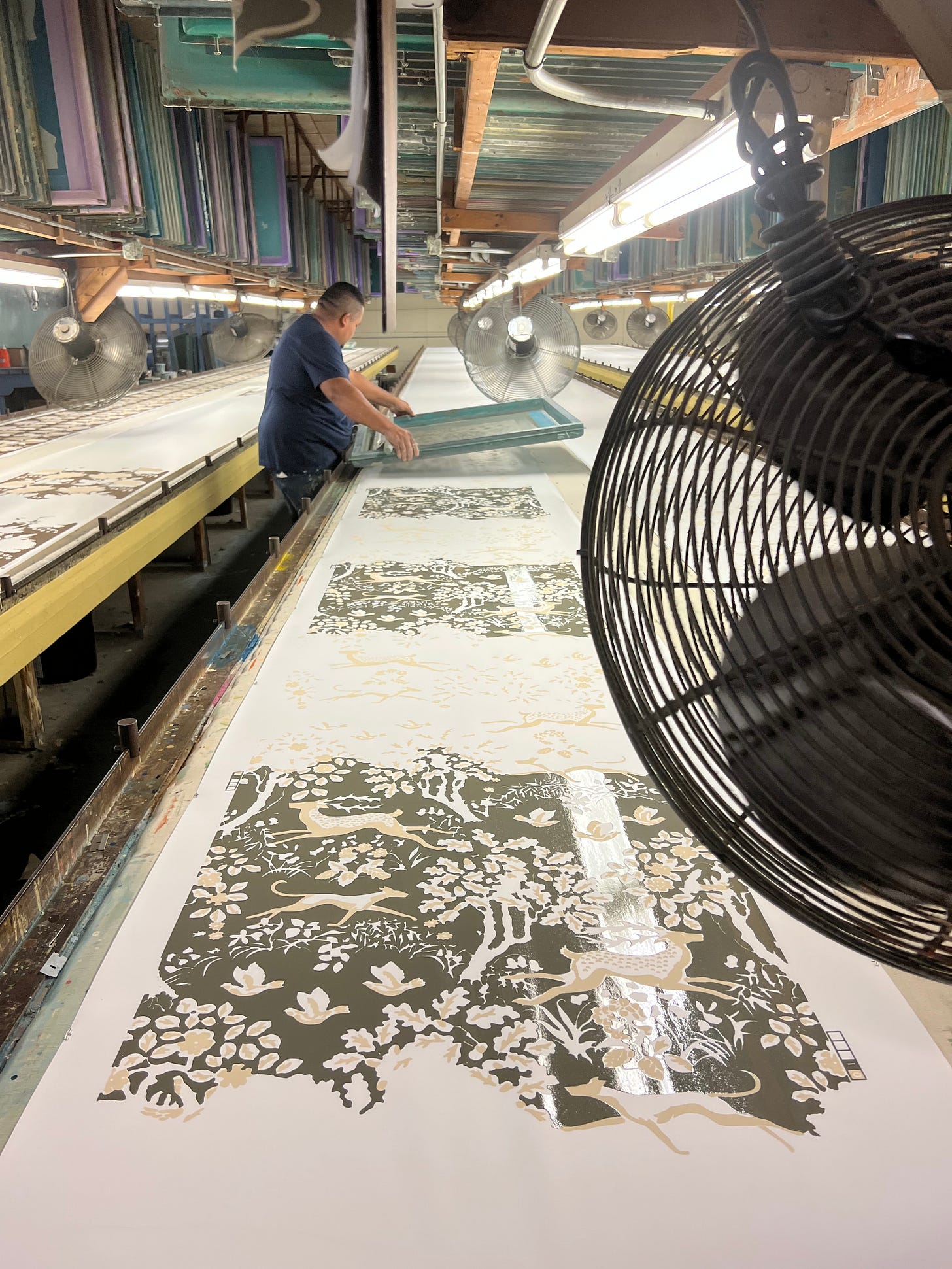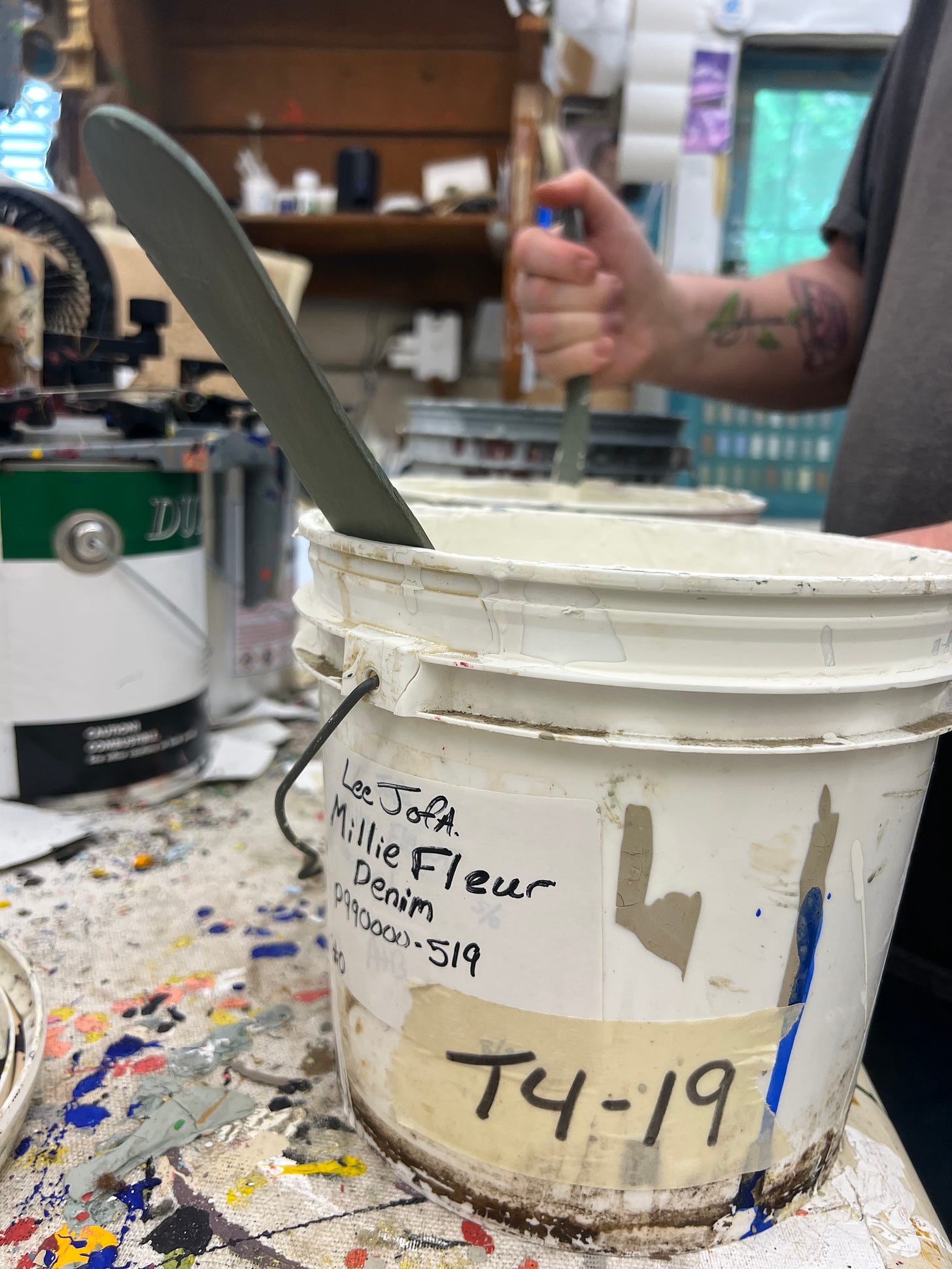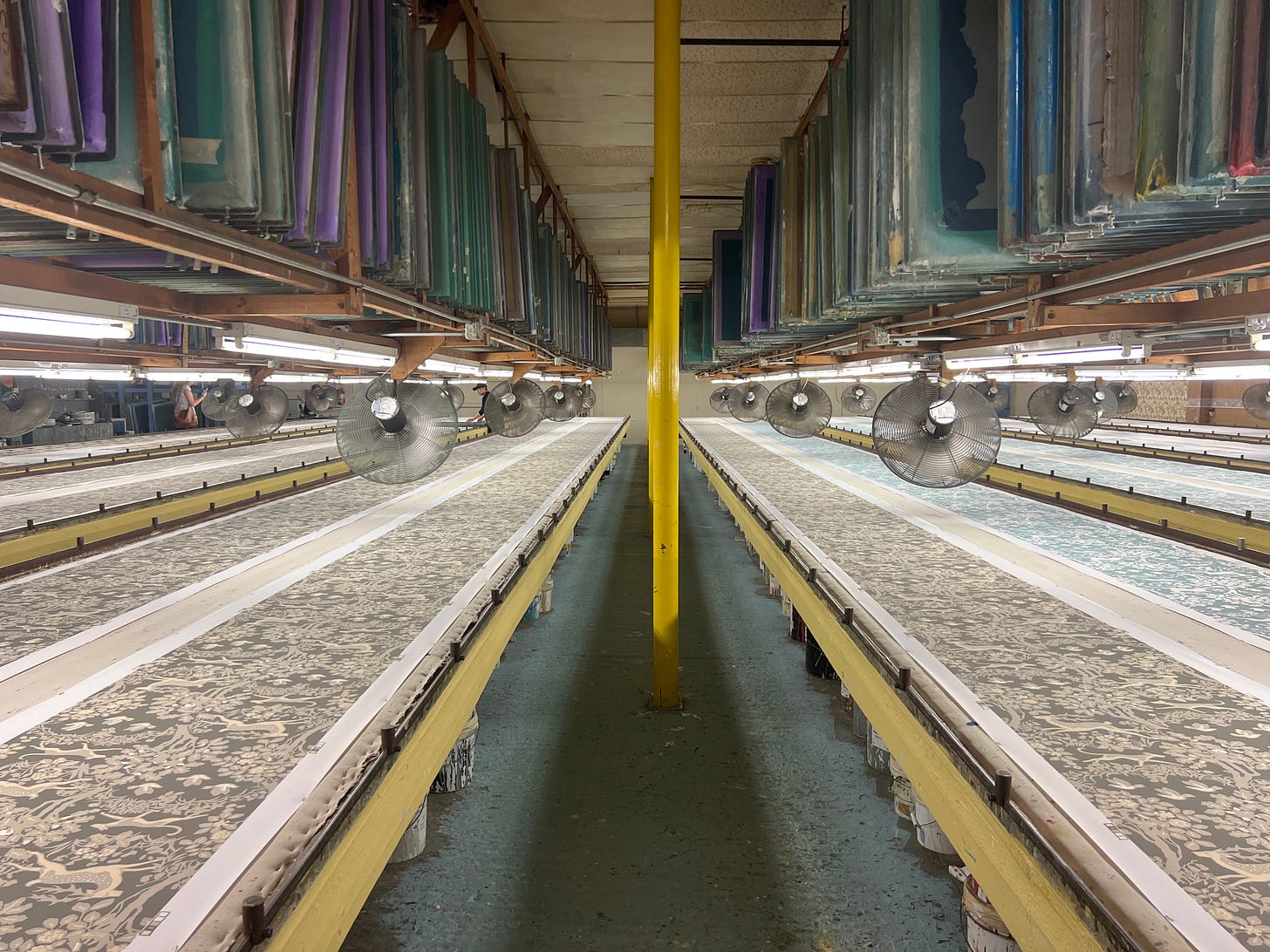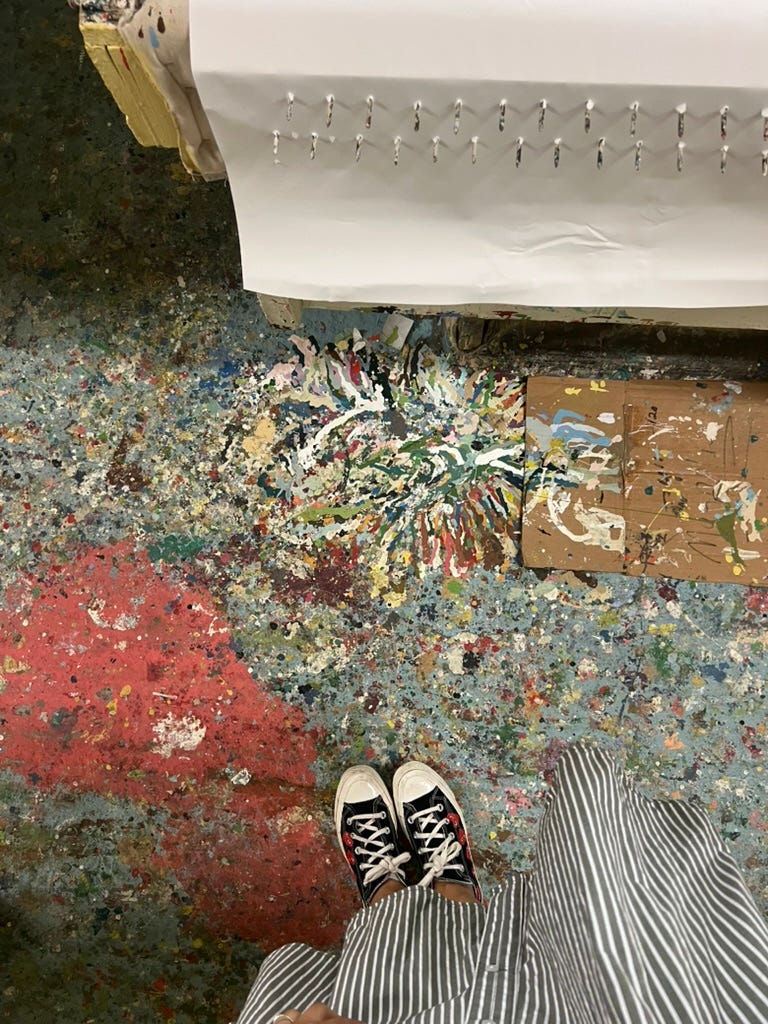Last week, I visited a local wallpaper printer to see production of one of Lee Jofa’s oldest-running patterns, Mille Fleur. The printing facility opened in the 1970s, and was still refreshingly lo-fi. Inside an unmarked building, classic rock blared from the speakers, and industrial fans whirred. Screens were stored in racks overhead, and the floor was encrusted with colorful splatters. Printing tables the length of bowling lanes were prepped with white paper like paths of untouched snow.
To begin, the printer poured ink along the edge of the wood-framed screen, then pressed it through with a squeegee in one smooth pass. Methodically, he printed every other repeat until he reached the end of the room. When the ink from the first pass was dry, he printed the remaining repeats to create a continuous surface. Each layer of the pattern was its own screen, and each color had to dry before the next. It took a few hours for the jigsaw puzzle of the pattern to come together.
I was heartened to see the process hadn’t changed since I learned how to screen print over twenty years ago at the Rhode Island School of Design. I can still remember coating the fine mesh with light-sensitive emulsion, then exposing the black and white negative of my design. After all the prep work and planning, printing the first repeat was always magical.
Unlike my fellow textile majors, the printers at the facility were not angsty girls in ripped jeans, but middle-aged men well trained in the craft. Their experience and efficiency made the process look easy, though I knew firsthand that it was not. Hand screen printing was laborious and repetitive. Whether clients knew or appreciated the work involved, every roll was a labor of love.
In another room, a master colorist mixed inks by hand in white buckets. The inks for a particular design could be stored and reused for several years. Every time the factory received an order, new production had to match an approved standard. While there was some degree of tolerance for handmade items, clients expected their rolls to match their memo samples. Considering that the color matching process wasn’t mechanized, the consistency they achieved was impressive.
The printed ink was wet and shiny at first, reflecting the lights above. As it dried, the color darkened, curing into a rich, opaque shade. Watching paint dry is an idiom for a tedious task, but watching hand-printed wallpaper dry was mesmerizing.
Every mill visit was an opportunity for me to reconnect with my inner art school student, the misfit teenager who just wanted to make things. As I’ve climbed the corporate ladder, I’ve gotten further away from the raw impulses that led me here. The truth is I spend most of my time in meetings, writing emails and making spreadsheets. Some tasks are creative, but there is no tangible "creation” in my work day, no ink splattered on my Eileen Fisher trousers.
Standing between the printing tables, I reveled in the rhythm of the process, and the sense of purpose that filled the room. I thought: This is what I want to be a part of. This is what matters.
Along with this thought came a series of sinking realizations. In the past year alone, two domestic printers had shuttered, leaving even fewer options for this kind of manufacturing in America. The designs that kept the lights on at this facility were classics that had been in production for decades. What happened when they became less popular and got discontinued? Or the owner retired with no successor to take over?
Moreover, the industry was turning more and more to digital printing, which didn’t require screen costs or nearly as much inventory. Management and purchasing teams across the board were eager to keep less rolls on the warehouse shelves. Hand-printed papers demanded an up-front investment that was becoming harder to justify. Some claimed that today’s clients couldn’t tell the difference between printing techniques, or if they could, they didn’t care. I found this hard to believe, though there was no way to prove whether a pattern would have sold better if it was printed one way or another.
I understood the shift to digital from a business standpoint, but it hurt to imagine a world without this kind of hands-on production. If textile companies didn’t keep supporting print shops like this one, they would soon cease to exist. In the not-so-distant future, our walls would be plastered in digitally printed, AI generated patterns - no craftsmanship required, just a finger to push the buttons.
I never wanted to be one of those middle-aged people who thought better days were behind us. But by the time I left, I was heady with nostalgia, and a little high from the fumes. Of all the things to mourn right now, artisanal wallpaper doesn’t make the list. Still, I said a prayer. A prayer for the future of interior design. A prayer for my career, wherever it may take me. A prayer for the makers and the misfits.
Thank you for reading!








